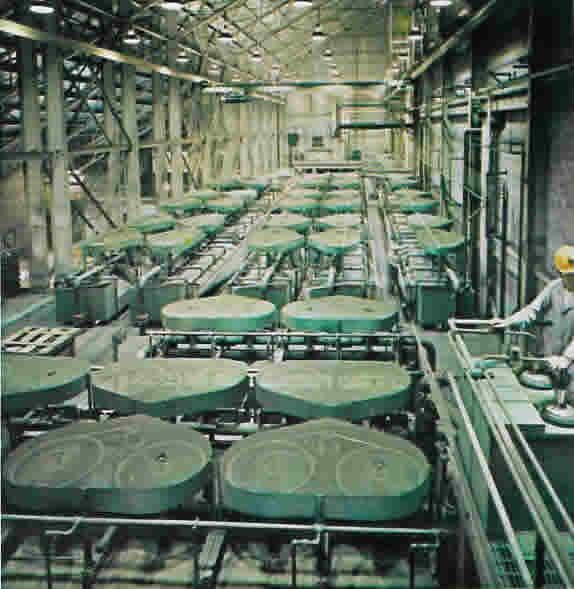
MILLING-CONTINUED
FLOTATION
The flotation machines, all Galigher " Agitairs", occupied one 5O-ft. section across the full width of the mill building. A narrow 20-ft. service bay separated it from the fine-grinding section with the concentrator's main control room overlooking the flotation cells.
Mixed with water and suitable chemicals, the Granduc ore goes through these flotation machines, where the copper mineral rises into a froth to be skimmed off, leaving only waste behind. This copper concentrate is thickened, dried, and stored, ready for shipment. The flotation design called for the installation of a total of 144 cells supplied by the Galigher company. All were in place except for two 12-cell rougher banks which will not be installed until the decision is made to expand to the 9000- t.p.d. level.
There were two lines, operating independently of each other, of 48 rougher cells each of 6O-cu.-ft. capacity; eight cleaner cells of 40-cu.-ft. capacity; and four re-cleaner cells each with 40-cu.-ft. capacity.
From a process standpoint a 7-ft. by 13-ft. regrind ball-mill is part of the flotation section although it had been installed in the grinding bay.
As mentioned above, cells were arranged flow-wise in two entirely independent sections except for the regrind mill which handles combined rougher concentrate streams. The mill operated in closed circuit with three regrind cyclones. The overflow, containing 17% solids and 85% minus 325 mesh, wass again split and fed to two cleaner-recleaner circuits. The rougher tails were discharged below the concentrator. Re- cleaner concentrate, 30% solids, flows by gravity to the thickener
